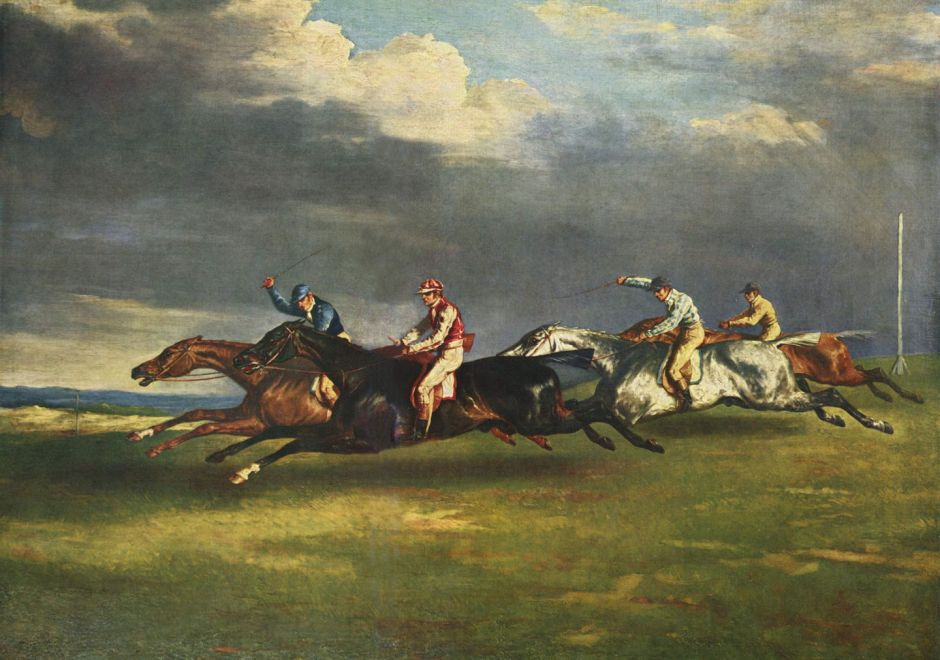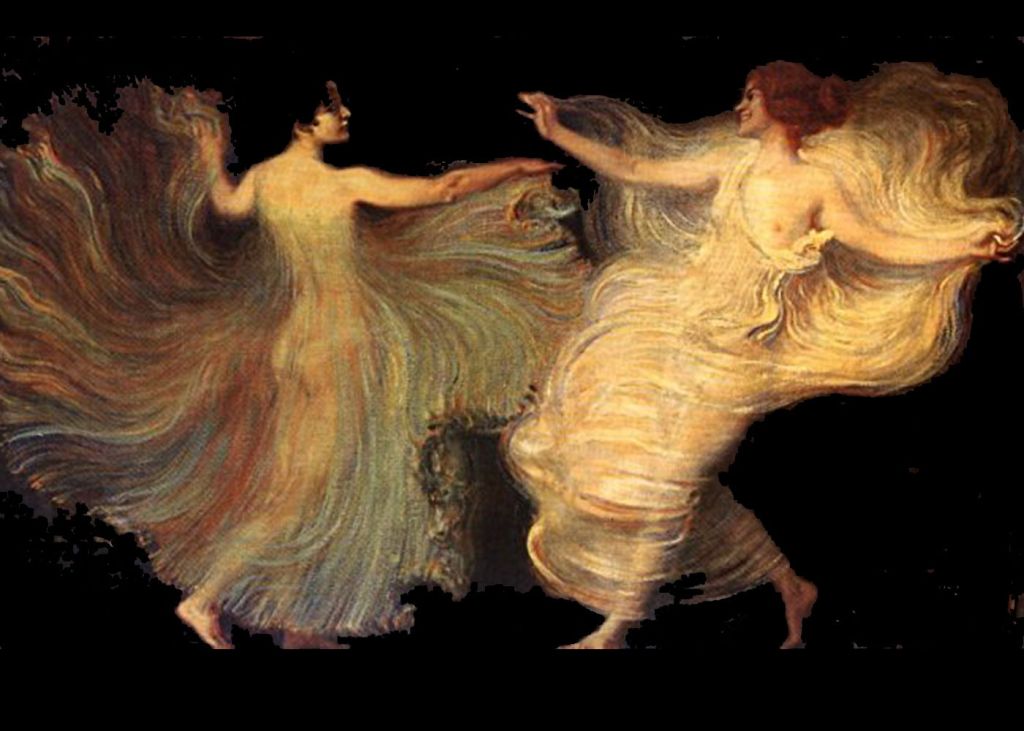In the first of these two articles looking at the depiction of motion in figures, I had diverted from motion implied by the rules we learn about the world around us, to look at billowing garments. Other images use those rules to impart motion in still images.

Johann Wilhelm Baur made explicit the course of the arrow in flight from Diana’s bow, as it heads towards the unfortunate target of Chione, in this engraving to illustrate Ovid’s Metamorphoses. In the background, he has placed Daedalion in an obviously transient posture as he throws himself from a cliff.
These work well for motion which the unaided eye can resolve by careful study. But some motion is so rapid and complex that artists could only guess what to show, the most common example of this being the galloping of quadrupeds like horses.

Artists like Théodore Géricault who had studied this carefully often showed galloping horses in this airborne position, with their legs fully extended and all four hooves well clear of the ground, as in his painting of The Epsom Derby (1821).

This is shown again in January Suchodolski’s Furūsiyya (1836).

By the time that Edgar Degas painted this posture in The False Start (1869-72), its veracity was being challenged. In 1872, Leland Stanford, who had made his fortune from the American railroads, hired the British photographer Eadweard Muybridge (1830–1904) to use photographic techniques to establish whether the galloping horse does ever assume the posture.

It took Eadweard Muybridge several years to devise an ingenious system using a dozen cameras to settle the matter, but in 1878, that answer came in this photomontage of The Horse in Motion: in fact, the moment that all four hooves are clear of the ground is when the legs are tucked under the horse’s body, not when they are fully extended.
This was, and still is, seen as a moment of triumph for new photographic technology, demonstrating a truth that had eluded centuries of great artists. It spawned a succession of studies of different modes of human and animal motion.

In France, using different apparatus, Étienne-Jules Marey made studies such as this of a Man Running in 1883. (By a strange coincidence, Muybridge and Marey were born and died in exactly the same years.)
At a time when engineering, the sciences, and mechanistic views of how humans functioned were in the ascendant, this was a triumph of modern technology, and many artists changed the way in which they depicted the galloping horse. Muybridge and Marey’s images became influential to artists, including Degas, but limited insight into human vision led to misunderstanding.
Like the moon illusion, knowing that horses never actually achieve the classical painted posture doesn’t affect our perception of the horse’s movement. The artist’s purpose is not to show a physically accurate representation of an instant, but to persuade or even trick the viewer into perceiving the image as they intend. The impossible posture of a horse galloping is completely effective in that, so remains valid.
Photographers and advocates of technology were also deliberately avoiding the problems raised by photographic artefacts, which they saw as temporary technical issues. Salient among those was, and remains, motion blur.
Images formed in our retinae have persistence, which we perceive most vividly when looking at relatively bright objects such as flames and fireworks in the dark of night. The moving light leaves a ‘visible trail’, an effect often exploited by entertainers and in firework displays, but it isn’t something of which we are aware in more normal, daytime lighting. We don’t perceive passing vehicles as being blurred by their motion, as we either look at and track the moving object, or concentrate on the stationary surrounds.
The camera has an inherent persistence resulting from the finite period during which it must capture its image. With long shutter speeds, slow-moving objects blur in front of a static camera, or, if the camera tracks the moving object, the static parts of the image are blurred. Even with the high shutter speeds used by Muybridge, the faster the motion, the more blur appeared.
Photographers avoided this clear demonstration that the camera didn’t always tell the truth, and ducked the response that in this case it was the painter’s crisp image which was more faithful to reality.

We don’t see London buses blur in this manner, and we know that in physical reality they don’t blur either. Paradoxically, this limitation in photography has become so commonplace and accepted that it has become part of our everyday perceptual experience, and has been incorporated into visual art.
The first paintings using motion blur started to appear at the end of the nineteenth century, as viewers became increasingly accustomed to seeing and reading photographs. As a painting technique, it appears to have been used initially to enhance the feeling of motion in representations of dance.

Giovanni Boldini seems to have used it here in the background, and more slightly at the edges of the dancer’s clothing, in his Portrait of Anita de la Ferie, ‘The Spanish Dancer’ from 1900.

Franz von Stuck appears to have used flowlines in his Dancers in 1896, rather than simple motion blur.
During the twentieth century, motion blur became stylised into motion lines, widely used in cartoons, comics, and illustrations.

Without the lines, the very rapid motion of Carlos Latuff’s aircraft would have been too implicit.
During the late nineteenth and early twentieth centuries, human perception changed as a result of exposure to photographic images, bringing motion blur, motion lines, and other visual devices. What to our ancestors would merely have appeared to be a blurred and defective image has taken on new meaning.

